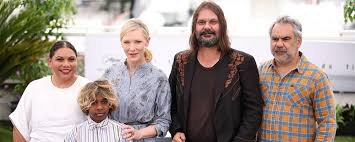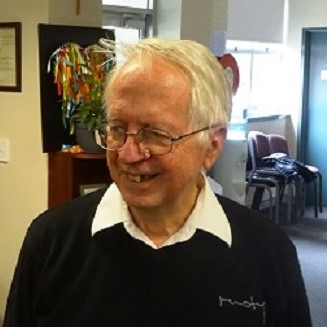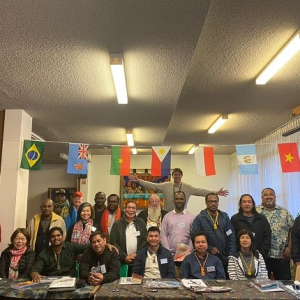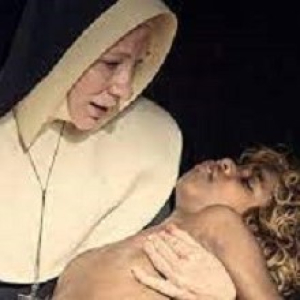Peter MALONE
Acknowledging John Franzmann MSC
Acknowledging John Franzmann MSC
John Franzmann turns 85 today. He has been a Missionary of the Sacred Heart for 65 years and a priest for 58 years.
John is a Queenslander and went to secondary school at Downlands College, Toowoomba. He made his first profession on February 26th 1958. Studies for priesthood took place at the Sacred Heart Monasteries, Croydon, Victoria, and Canberra. He also studied Arts at the Australian National University. He was ordained on July 21st 1965.
Almost all of his MSC ministry has been in education. His first appointment was to Daramalan College, Canberra. He has taught at Chevalier College, Bowral, and St John’s College, Darwin. He served as Principal at both of these last two colleges. For some years, he was part of the administration of the Diocese of Darwin.
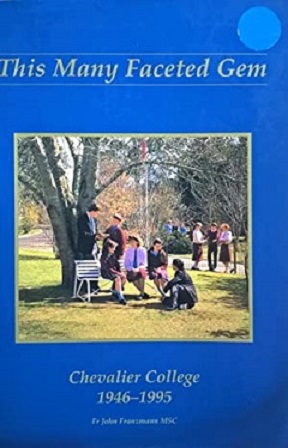
Two tangible results of his work can be seen in his history of Chevalier, This Many Faceted Gem, and history of Monivae College.
John’s education forte is Maths, teaching and coaching students for more than half a century. One of his students is Geordie Williamson, Professor of Mathematics at Sydney University.

In recent decades, John has lived at Chevalier College, continuing his dedication to students and maths.
Cathedral Mass, Days of meetings, Open Day – MSC Mission Office 25 years’ celebrations
Cathedral Mass, Days of meetings, Open Day – MSC Mission Office 25 years’ celebrations
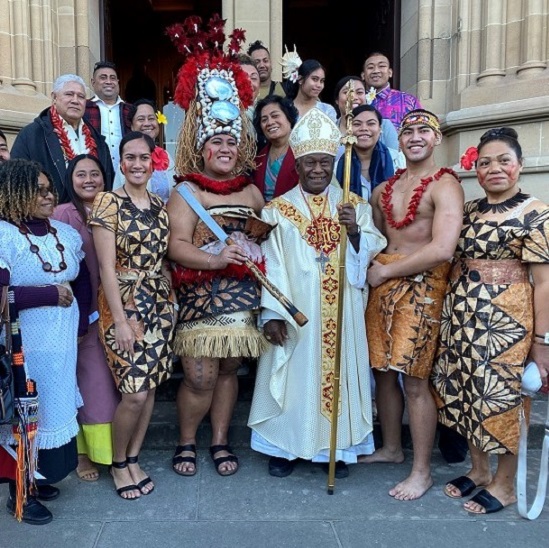
Report from The Catholic Weekly, by Marilyn Rodrigues
Papua New Guinean Cardinal John Ribat MSC presided over the colourful and heartwarming Mass on 9 July, which brought together faithful from all over the world—especially the office’s regional partners Papua New Guinea and the Pacific Islands, Indonesia, India, the Philippines, Vietnam and Africa.

Choirs from Sydney’s Filipino, Indonesian and Vietnamese communities led the singing, and hymns and prayers including parts of the Eucharistic prayer were prayed in different languages.

The offertory procession was led by Samoan dancers in traditional costume and the Gospel was processed by representatives of the Papua New Guinean community, accompanied by drums and the blowing of a conch shell.
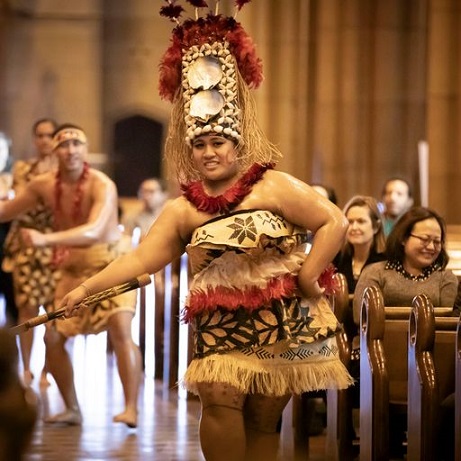
The late Fr Adrian Meaney MSC established the office in 1998 to support a lay movement of outreach and support locally and internationally.
Speaking to supporters after the Mass, the current director Fr Roger Purcell MSC said that the understanding of mission had changed along with the church’s growth in developing countries.
Mission today means “to be more the church that we are supposed to be, a church of communion, unity and diversity, respect and love.”
“It’s no longer out there amongst people who haven’t heard it,” Fr Purcell said.
“Many of the people we went out to on mission are no longer a mission, they’re a church.
“And the MSC mission office is to encourage a missionary spirit among the faithful encouraging all to become mission-minded.
“That’s what we’re here for. If the church is not on mission, if we’re not evangelising, then we’re not church.
The Mass was also an occasion to celebrate the 7 July feast day of Papua New Guinea’s Blessed Peter to Rot.
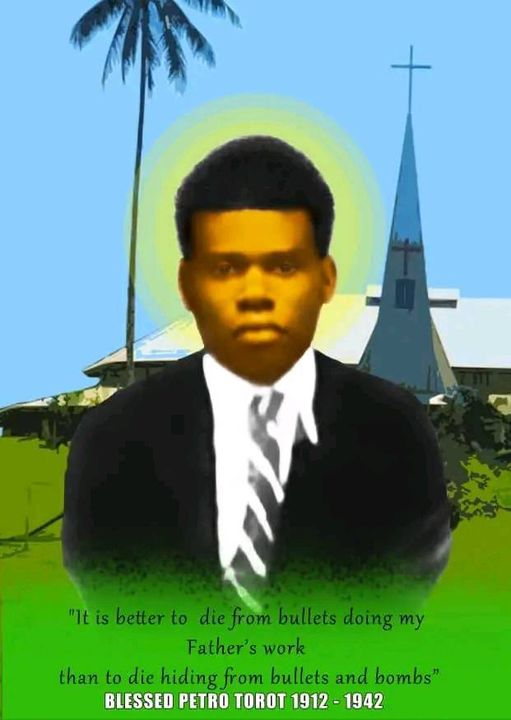
Directors of the seven regional offices then came together for three days of conference and in-service.
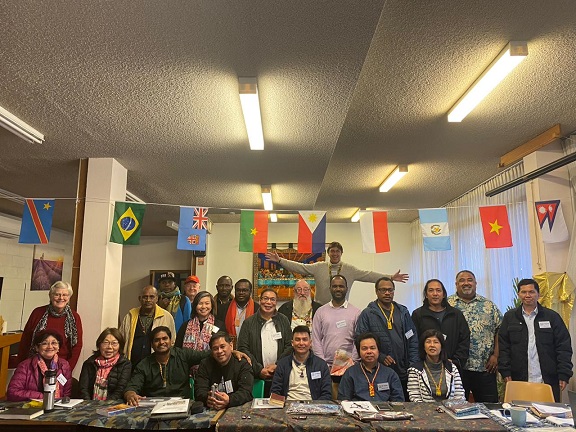
Celebrations conclude with an open day at the Kensington mission office and monastery on 15 July.
Jules Chevalier Bicentenary - 15th of each month reminder. MSC Mission Office 25 years’ celebration a fulfilment of Jules’ vision.
Jules Chevalier Bicentenary - 15th of each month reminder. MSC Mission Office 25 years’ celebration a fulfilment of Jules’ vision.
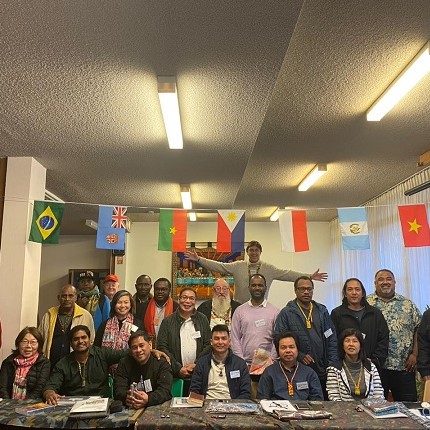
Each 15th, an alert to the Bicentenary of Jules Chevalier’s birth, March 15th 2024.
This week’s celebrations, Mass in St Mary’s Cathedral with Cardinal John Ribat MSC and the international visitors from Africa, Asia and the Pacific remind us of Jules Chevalier’s missionary dream and what it led to.
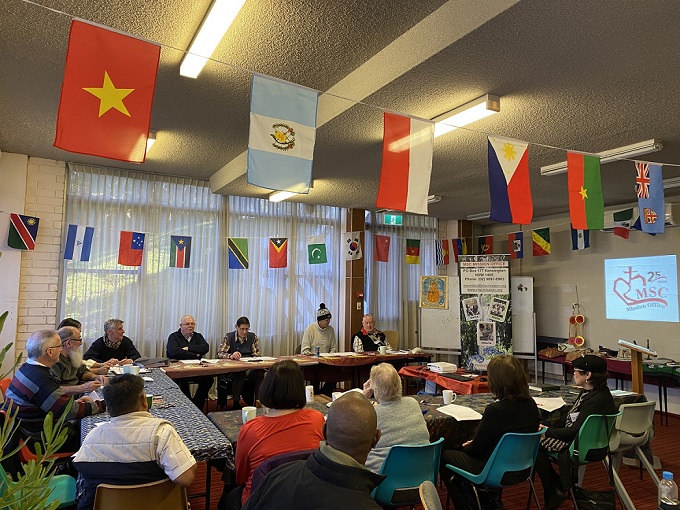
A La Belle Etoile/ Sugar and Stars
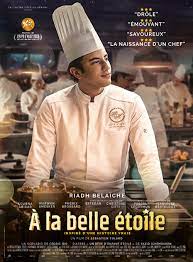
A LA BELLE ETOILE/ SUGAR AND STARS
France, 2023, 110 minutes, Colour.
Riadh Belaiche, Loubna Abidar, Marwan Amesker, Dycosh, Georges Corraface.
Directed by Sebastien Tulard.
Here is a cooking tale for a wide audience. While the French title means “Under the Stars”, and that is relevant for the experiences of the central character, Yazid (Algerian-born actor with charm, Riadh Balaiche) who for many years lived out in the open, literally under the stars, the English title by introducing Sugar, is very much to the point. Yes, this is a cooking story, but it is a cooking story about desserts, elegant French desserts, ingredients, appearance, style.
But, interwoven with the cooking story is the history of the young boy, Yazid (an engaging performance by Marwan Amesker), very much a social history story about migrants to France, difficulties, foster families, life for teenagers in an institution. In fact, the narrative goes back and forth, having Yazid in the present remembering what it was like in the 1990s when he was a little boy, and also remembering what his life was when he ventured into a Paris chef’s kitchen is in 2006. (The present of the story is 2013 into 2014 and the international competition for Pastry Chefs.)
At first, Yazid’s story is a sad one. His mother, Samia (Luke Abbey do, Moroccan-born) is not dependable, drugs, absent father, the boy dragged to social welfare and his mother with her con-tale scrounging finances. But, a kindly couple become an alternative family for Yazid, the mother and father older, the father with his background as a chef, their teenage son an enthusiastic teacher for Yazid who begins to make cakes, finds that he has a talent. And, all the time, his mother coming to get him, harsh times at home, his taking refuge with the foster family.
In his mid teens, Yazid is in a government institution, a harsh superintendent who wants to get rid of him, misjudges him (racial discrimination). However, when he makes a cake which delights everyone, the assistant director supports him, urging him to run away. Yazid does go to Paris to work with the famous chef, who does not treat fools gladly, but once he tastes one of Yazid’s desserts, decides to employ him, Yazid coming each day by train, 180 km, for the kitchen experience. By 2013, he is a chef at Riviera restaurant, put down by the jealous co-dessert chef, but good friends with Manu, another migrant who is put down constantly with prejudice. He cannot afford accommodation and, fears, sleeps under the stars.
Yazid’s ambition is to win competitions, especially the world competition, and uses his being accused falsely and sacked from the restaurant, to insinuate himself into the good graces of a previous customer who runs an extensive food empire who agrees to be his sponsor.
Long story short, not spoiling the plot, because we know that there will be great attention to the competition, the different stages, the Internationality (from Belgium to Japan), the array of cakes, their look, our being envious of the judges who sit there tasting all, the ice sculptures, Yazid moved by the illness of his mother, his happiness at having his foster parents and money to at the competition, and a nice, happily-tearful climax.
The film is based on a book by Yazid and gives final photos of him, family and Manu, as well as information about what he has achieved in his chosen vocation in the last decade.
1. The popularity of cooking films? Audience interest in social problem films? The combination here?
2. The story based on an actual character, his book, the information at the end, photos?
3. The title, literally Under the Stars, Yazid and his sleeping out for years, appreciating the stars? The English title, the introduction of the theme of Sugar, chefs for desserts, pastries, style and service?
4. The 1990s, the young boy, migrant, his mother and her dependencies, absent father, the harsh upbringing, the spoiling of his sneakers, going to social services, his mother and her con-story getting money? Irresponsible at home? The foster family, the parents and their welcoming, the son and his explanations about cooking cakes, the father and his chef background? The boy feeling at home with them, taking refuge with them?
5. 2006, Yazid as a teenager, the institution, the range of boys in care, their training, dormitory style, fights, the severity of the director, her interviews with Yazid, wanting to get rid of him? The Deputy, his background, supporting Yazid, finally urging him to run away? The young people, the young man with a moustache and his singing, the blond man and his fights, sex talk…?
6. Yazid going to Paris, the reputation of the chef, travelling the 180 km, talking back to the chef, given a trial, his making the cake, the chef changing his mind, employing him, the demands, the pressures on Yazid, getting some sleep, catching and missing the train, the work? The support of the fellow workers?
7. Yazid as a character, sympathetic, his charm, given his difficult background, his coming through? Determination, convictions, the scenes showing him preparing the ingredients, mixing, cooking, tasting, the deserts, his achievement?
8. 2013, on the Riviera, the hotel, the nasty rivalry, the friendship of Manu, the appreciation of the chef and her finding a room for Yazid? His living outside? The distinguished guest, is calling for Yazid and appreciation? The rival, the rotten fruit, Yazid being sacked? His getting a job at the bar, approaching the entrepreneur, making a claim, getting the sponsorship?
9. The international competition, Yazid and his training, the sponsor, the help of Manu?
10. Six months, the competition, preparations, with Manu, with the stoves, the entry, the area, the power going off? The cheering audience, the international competitors, flag-waving, observing the cooking, the range of items over the six hours, the judges in their tastings? The ice sculpture? The background of Yazid and his sculpting, the female torso, in chocolate, for the competition, its breaking, his not being able to go to that competition? The da Vinci theme, the ice sculptures, the impact of his mother, the final sculpture?
11. The judgements, the French win, the achievement? The collaboration between the chefs and their supervisor?
12. His mother, in hospital, his making the cake for her, a reconciliation with her through his ice sculpture?
13. The foster parents, their being present for the competition, rejoicing? Manu and his sitting next to the entrepreneur?
14. The further information about Yazid and his book, his decisions, local support, achievement?
Insidious: The Red Door
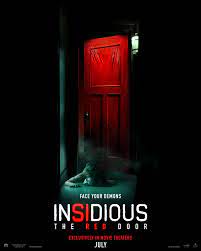
INSIDIOUS: THE RED DOOR
US, 2023, 107 minutes, Colour.
Ty Simpkins, Patrick Wilson, Rose Byrne, Sinclair Daniel, Hiam Abbas, Andrew As Store, Peter Dager, David Call, Leigh Whannell, Angus Sampson, Lin Shaye.
Directed by Patrick Wilson.
This is the fifth episode in the Insidious franchise and initial critical and box office positive response indicates that fans of the series have not been disappointed. The Insidious films are the brainchild of Australian writers and directors, Leigh Whannell and James Wan. (And it is they who began the Saw franchise as well as contributing to The Conjuring franchise – and with Patrick Wilson as the star of insidious as well as the Conjuring films, casual viewers of the series may well get them mixed up
However, the screenplay has been cleverly written so that fans will not be confused. It goes back almost 10 years and continues from eerie experiences for Josh Lambert and his young son, Dalton. In case we don’t remember exactly the details, this film opens with them undergoing hypnosis so that the memories of the frightening experiences will vanish, Josh recovering and resuming his life, Dalton, on the other hand, going into coma for a year. Dalton is played by Ty Simpkins who played the young boy it 10 years earlier. Josh, on the one hand, still feels disturbed but does not understand why, difficulties with his wife and divorcing her, puzzles about his supportive mother – who dies and is buried also at the beginning of the film.
So, the present. Josh is disturbed at his mother’s funeral when he encounters the doctor who hypnotised him but does not recognise him. And the disturbances begin again, vague memories of his absent father, but, gradually, his becoming possessed by visions of bodied and disembodied characters, more and more disturbed. And he has lost the bond with his son. He does off to drive Dalton to his new college, help him settle in, but Dalton is a strange character in himself, dark, morose, a skilful artist who has drawn a portrait of his grandmother, but, like his father, becoming more and more possessed by strange creatures in his imagination and dreams.
Dalton has enrolled in art classes and experiences the highly demanding lecturer, played by Haim Abbas, who illustrates her themes by some of the ferocious Goya paintings, the father devouring his child. She encourages the artists to be quiet, count back from 10, then paint what emerges from their psyche. Dalton starts to paint ominous pictures, especially a red door and a mysterious ferocious character, at first not distinguishable, but then resembling his father, with an axe. Dalton has disturbing dreams, fantasies, out of body experiences.
There is a potential strong anchor in Dalton’s life, a new student, Chris (a vigorous performance by Sinclair Daniel), supporting Dalton, trying to understand him, sharing in some of his fearful experiences.
Josh goes through an MRI process but there is nothing wrong with his brain. But he does go into a deep sleep, nightmares, confronting his inner fears, understanding his father, eventually bonding with Dalton.
Patrick Wilson has been convincing in both the Insidious and Conjuring films – and, this time he is the director. Allegedly the end of the series, but with audience interest who knows what creative turns screenwriters can come up with.
1. The popularity of the series? This one the fifth? Presupposing earlier films in the series, characters, suppression of memories, surfacing of memories? And the appearance of Elise?
2. The title, in this film, astral projections, insidious presence, handed on from father to son? The red door, Dalton and his painting, the continued painting, the appearance of the door, behind the door?
3. The opening with the funeral, the family home, driving Dalton to college, the rooms, the art lectures, the frat party, Josh and his MRI scan, the visits to the home? The contrast with the eerie sequences, astral projections, creatures, intrusions, nightmares, threats and violence, jump scares for the audience? The musical score?
4. The initial visit to the hypnotist, the suppression of the memories, in Josh, Dalton in coma for a year? His wife and her knowing the truth? Josh’s mother knowing the truth? Her death, the funeral, the presence of the hypnotist? The beginning to jogging Josh’s memory?
5. The tension in the family, the divorce, Josh and the children, the visits, his wife and her love for Josh, her not being able to handle the situation? The death of the mother? Dalton’s portrait, indication of secrets?
6. Josh, trying to bond with Dalton, Dalton’s reactions, driving him to college, the frat notices, Josh carrying the luggage, the room, the bed, putting the pictures on the wall, the arrival of Chris, the mistake with the name, male/female? Her staying one night, the discussions, her getting the change of room, going upstairs? Her bright personality?
7. The art classes, the teacher, strong-minded, the artist refusing to destroy his painting, leaving? Josh, tearing up the painting, the praise of the painting, her praise of Josh’s determination? The lectures, counting from 10, painting whatever surfaced, Josh and the red door, the sinister presence, the black? The teacher and her comments about Goya and his experiences, surfacing in his painting? The father devouring the child?
8. Josh, going to the MRI, the sinister experiences, asleep, waking, the further presences? The story of his father, absence, hostility? His father’s note about things ending? His death? Yet a sinister presence? Josh and his contact with Dalton? Going to the home, his wife revealing the truth, his sleeping, going into a trance, the violent experiences, the threat of his father, the axe, his becoming like his father, the memories of the past, Dalton is a boy, the frightening situations, Josh possessed by his father, leading to saving Dalton? His waking up and reassured?
9. Dalton, painting, his quiet personality, Chris forcing him to go to the frat party, the decision that it was lame, Nick, his speech, his room, Chris and Dalton sharing, the apparition of the vomiting man?
10. The further nightmares, Dalton continuing the painting, black, the figure as is father and the red door, the threats to Chris, her handling the situation, yet her fright, the issue of darkness and lights, danger under the bed? The buildup to the apparitions, sinister, the sinister score? Dalton saved by his father?
11. A happy ending between Chris and Dalton? Happy reconciliation between Dalton and his father? With the whole family?
12. The place of this film in the series, and Patrick Wilson directing?
Miracle Club, The

THE MIRACLE CLUB
Ireland, 2023, 91 minutes, Colour.
Laura Linney, Maggie Smith, Kathy Bates, Agnes O'Casey, Mark O'Halloran, Mark McKenna, Eric D.Smith, Stephen Rea, Niall Buggy.
Directed by Thaddeus O'Sullivan.
This is an Irish tale set in 1967 Dublin. As the title indicates, miracles, there is more than a Catholic tone to this drama with touches of comedy. And, it will play more extensively around the world because of the star power of its cast, Maggie Smith, in her late 80s, Lily, a Dublin housewife (a long way from Downton Abbey), Kathy Bates, Oscar winner for Misery, Eileen, and the always versatile Laura Linney, Chrissie. They are supported by an Irish cast led by Stephen Rea as Eileen’s husband.
Looking back to 1967, in the Catholic Church, this was the immediate aftermath of the Second Vatican Council at the beginning of many changes in the church, and the dialogue with what were called “the signs of the times”. However, there was a long Catholic tradition in Ireland, cheerful in many ways, but rather harsh in others. At the opening of the film, the local parish puts on a talent show to raise money for a charity, down at the parish hall, and the two older ladies dressing up, along with the young mother, Dolly (Agnes O’Casey) who is sad that her young boy, Daniel, has not yet spoken, Eileen singing He‘s So Fine and Lily and Dolly as the backup singers (who would have thought they would have seen Maggie Smith as a backup singer!). The prize is two tickets to Lourdes. (And the second prize is a cut of bacon.)
So, the introduction of the theme of Lourdes, the story of Bernadette and her experience in apparitions in southern France, 1858, and the stories of miracles and cures, the screenplay telling us there have only been 62 verified cures since 1858. Eileen recalls the film of The Song of Bernadette (1943), Based on the book by Jewish Author, Franz Werfek, an extraordinary Impact about Lourdes in Its time. This all has the support of a quite genial parish priest, Father Dermot Byrne,( Mark O’Halloran). But, there is a sadness in the town, the death of an elderly woman, her estranged daughter, Chrissie, Laura Linney, returning to the town after 40 years for her funeral. There is a sad story here, a reminder of much Catholic harshness, the unmarried pregnant girl, the severity of judgements, the effect on the young father, silence and alienation for decades, and sad secrets for both Lily and Eileen.
With some manoeuvring, everyone sets out for Lourdes, the bus, the ferry, the mountains of the Pyrenees, the vista of the basilica and the shrine of Lourdes.
And here is the challenge for the audiences. The believers in the audience will have no difficulties (perhaps not quite right because some of the pilgrims voice a number of difficulties, the brunt of scepticism, high expectations of miracles, disappointments…. For many, this Catholic story will smack of another world of which they are not part. And, as voiced in the screenplay, there are always the suspicions of superstition, presumptuous faith.
The pilgrims go through the rituals, the visit to the grotto, stories of Bernadette and the apparitions, devotion to Mary, statues, and the important process of immersing oneself in the waters, coming from the spring that Bernadette herself dug in the soil and which has flowed ever since. It is in the baths that there are expectations of miracles and consequent disappointments. (Surprisingly, the ever-popular at him is not included.)
And, there are some entertaining scenes of how everyone is managing back home, Lily’s husband taking to bed and enjoying eating, Eileen leaving her husband and six kids, a sceptical husband and, as a neighbour says, a miracle already because he actually has to do the shopping! And he does some cooking! Dolly leaves behind her young husband and daughter, his being angry at her going.
Towards the end, there is a lot of talk about forgiveness and reconciliation and, as we are anticipating, and probably hoping, the past angers surface, upsets, misunderstandings, the scars of hurt. And, as is so often said, as well as the statistics indicating, healings from illness are not the norm at all of miracles in Lourdes. Rather, it is the effect of making the pilgrimage, reflections on life and relationships, the possibilities of reconciliation and new directions in life. Dolly and the whole group also hope for a miracle when Daniel, will begin to speak. It is a tribute to the writers and the director how this is handled with reticent delicacy.
In only 90 minutes, we immerse ourselves in the Ireland of the Catholic past, go on pilgrimage to Lourdes, and experience a bit of challenge to where our own lives might need some healing and reconciliation.
(A French film, Lourdes, 2009, winner of International Catholic awards as well as critics’ awards, is another perspective on pilgrimages, miracles and the church.)
1. The title? Expectations? Lourdes? Belief in Lourdes, the Marian apparitions, the experience of Bernadette, the pilgrimages, the healings?
2. An Irish tale, Dublin in 1967, the suburb, the houses and streets, the church, the parish hall? Homes, shops? Realistic atmosphere? The musical score?
3. The introduction to the older ladies, Lily, visiting the cairn and the plaque for her drowned son, her grief, 40 years on? At home, her age, her husband, elderly, his food? Eileen, busy, the six children, the pregnant daughter and her disapproval of the boyfriend, her husband, taking her for granted as wife and mother, the rest of the children? The introduction to Dolly, the two children, George and his hard work, Rose and her playfulness, Daniel, his age, not talking yet? Their taking him to doctors?
4. Chrissie arriving in the town, meeting Father Dermot, her mother’s death, the gradual revelation about the estrangement, 40 years, the keys to the house, the impact of her return, the letter from her mother, asking forgiveness? The reaction of Lily and Eileen? Hostility? Dolly liking Chrissie, Daniel liking her?
5. The preparation for the competition, the women getting dressed, raising money, an alternate to the wake because of the dead woman’s organising of the competition, He’s So Fine, Eileen singing, Lily and Dolly as backup singers? The little boy winning? Giving his winning ticket to Lourdes to Dolly to take Daniel to Lourdes?
6. The issue of Lourdes, pilgrimages, so popular, from Ireland, bus, ferry, the Pyrenees, the town of Lourdes, the vista of the basilica and the shrine? Catholic audience response? Secular response?
7. The tensions, Eileen getting the dead woman’s ticket, the priest intervening, Chrissie giving it up? Dolly and George’s hostility, rushing away, getting the bus? Chrissie and her decision to come?
8. Lourdes, the atmosphere, the pilgrims, the hotel, Eileen and the luggage carried to her room, the sharing of the rooms and the consequences? The meals, the singing on celebrations at the end of the day?
9. The gradual emerging of the truth about Chrissie, 17, pregnant, Eileen her best friend, Declan, Lily’s son, the pregnancy? Chrissie’s mother, Maureen? Eileen telling about the pregnancy, loving Chrissie, hating her? The pressure on Chrissie, banished from Ireland, going to the United States, her later story about the abortion?
10. Lily and Chrissie sharing the room, talking, Lily’s leg, Chrissie getting the wheelchair, taking her to the baths? The immersion and the effect? Chrissie deciding to go to the baths? Yet her scepticism?
11. Eileen, the lump in her breast, the reassurances, keeping to secret, not going to the doctor, her faith in the baths, her disappointment at no cure? The anger, calling it a scam? Her drinking, outbursts, the attitudes towards Chrissie with an eye to Father Dermot? Apologising for drinking? Outbursts? Later telling Chrissie the truth about the relationship?
12. Dolly, her disappointment, getting Daniel into the water? The globe of Lourdes and his enjoyment, shaking it, holding it? Dolly’s fear returning home, George and Rose waiting to meet her, Daniel with the bowl, and only the audience hearing him say “Home”?
13. The scenes of coping at home, Eileen’s husband, having to do the shopping, the neighbour saying this was a miracle, his cooking the meal, the children’s reactions? Her return home and his appreciation of her? George, having to deal with Rose, the nappies, cleaning up? And Lily’s husband content to lie in bed eating!
14. The point about the number of miracles, 62 since 1858, verified? The talk about the other miracles, the point of going on a pilgrimage, reflecting on oneself, understanding, the need for forgiveness and forgiving, reconciliation?
15. And the finale with Lily taking Chrissie to see the memorial to her son, Chrissie looking at the photo of Declan?
16. A satisfying religious story, a satisfying allegory about hatred, harm, estrangement, forgiveness and reconciliation?
Spin Me Round

SPIN ME ROUND
Alison Brie, Alessandro Nivola, Molly Shannon, Lil Rel Howery, Ben Sinclair, Zach Woods, Tim Heidecher, Debby Ryan, Aubrey Plaza, Fred Armisen, Ego Nowdim, Ayden Mayeri.
Directed by Jeff Baena.
Spin Me Around is what happens to the central character, Amber, played by Alison Brie. But it is also what happens to the audience itself.
It all starts rather nicely at a diner in Bakersfield, California, where Amber has been working as a manager for some years, working with Paul (Lil Rel Howery). Suddenly she wins a competition, several managers in the US invited to Italy, to the headquarters of the company running the diners. Naturally, she is excited, never having been outside the US before, arriving in Italy with some of the other managers and being taken past a mansion but then being put in a second-rate hotel, her view from her room the garbage bins!
Seven of the managers are women, fairly glamorous, except for Debs, played in caricature style by Molly Shannon. The other two are men. They are to participate in a course on cooking. And so it goes, but…
Amber is spun around when she encounters the chief of the company, Nick, Alessandra Nivola on his yacht, questioning her, making approaches, but leaving her in the hands of his manager played by Aubrey Plaza. We gradually realise, as does Amber, that the whole trip is a set up, affluent Italians with a kind of Dolce Vita lifestyle, especially changing sexual partners, for the American women to become part of this. The irony is that the two men who caused some problems had been thought of as women because of their names, Fran and Dana.
Some black comedy, but some moral issues for Amber, the attraction of being picked out and then discovering that some of the other girls, the experience of the unmasking, her decision to return home, even resisting a visit from Nick, making a very strong Me Too#choice, and standing up for herself.
The film was written and directed by Jeff Baena along with Alison Brie. Baena is married to Aubrey Plaza and his work with her in other films as he has with Alison Brie and Molly Shannon.
Not what we were expecting – but another perspective on contemporary society and moral choices.
1. The title? The media of the title, Amber?
2. The US, Bakersfield, California, the town, the restaurant? The contrast with Italy, the range of cities visited, names on screen, Pisa, Lucca, Pistoia…? The Italian countryside and drives, the mansions, the drab hotel, restaurants…? The musical score?
3. The atmosphere of the Italian fairytale, Amber, her very ordinary life, the gift of the trip, travelling outside the US? The conversation with her friend, possibilities for romance? And nine years, her boyfriend taking her money, the collapse of her planned restaurant? Careful?
4. The competition, the commercial with Nick, Italian style, cheap prices, his charm on the screen? The competition, the winners, going to Italy, the course, all-expenses-paid?
5. Pisa, the airport, Craig and his meeting the group? The initial introductions? Amber, charm? Jen, Susie, American styles? Molly Shannon as Debs, losing her luggage, talking in the car, her behaviour, eccentric, married, on the lookout for something more, borrowing Amber’s clothes, her behaviour with the group, more and more eccentric? The two men? Their names? Driving past the mansion, but going to the hotel, the window looking out on the bins?
6. Craig, leadership, the course, the chef coming in for two days, Fran and his wanting to show off his skills? Nick’s arrival, kissing the women, Amber on the lips, the men, Dana and his adulation? The presence of Cat, in the background, observing, Nick’s assistant?
7. The poor programming of the course, the cooking demonstrations, showing Life is Beautiful, the inattention of the girls during the sessions? Craig and his behaviour?
8. Cat, friendly with Amber, taking her out, the cover of the migraine, Craig colluding, on the yacht, with Nick, his probing questions, earnest responses, the romance and her response? Cat picking her up, the return? The later contriving to meet with Nick?
9. The other women, unwell, time off? The two girls with the drugs?
10. The invitation to the party, Taking Amber for the expensive dress fitting? Wearing it to the party, Rick, his wife, his son and his wife and her jealous tantrum? Nick, his charm, dancing? But Amber and her suspicions? Fleeing with cat, cat and her amorous advances, cheating the restaurant owner with the food?
11. The invitation to the party, the tawdry atmosphere, Craig as MC, Nick and his presence, the presumption that Amber was willing to be part of this? Her leaving?
12. Going suspicions, Debs and her behaviour, Dana joining with Amber to discover what was happening, the background of the wild pigs, the attack, his seemingly dead? Debs’ reaction?
13. The expose of the party? The pigs and the attack, the police, the arrest in interrogations? Dana not dead?
14. The shift in the film from the holiday, to the romance, to suspicions, to exploitation, black comedy, sexuality, expose?
15. The group going home? Amber back to normal?
16. Nick and his visit, the allure, the invitations, Amber and her stances, her decent stand against Nick? The American woman, asserting herself, the attempted seduction, the issues of sexual harassment, #MeToo, Amber and self-worth and integrity?
Acknowledging Ted McCormack MSC, July 14th, 90 years of age.
Acknowledging Ted McCormack MSC, July 14th, 90 years of age.

Tomorrow, Fr Ted McCormack MSC turns 90. He will celebrate at Monivae College his base for many years for parish supply in the Sandhurst and Ballarat dioceses.
Born July 14th 1933, he made his first profession, 26th February 1954. After seven years of studies at Croydon Monastery, he was ordained 24th July 1960.
Ted has been a member of the Victoria-Tasmania community for many years.
Ted spent many years in PNG as a military and police chaplain, missionary work in a demanding professional area.
In later years, he worked in MSC parishes like Moonah, Hobart. Later, he made himself available for parish supply for priests going on holidays. This has taken him around the state of Victoria, many parishes - and the Bishops happy to ask for his services. This is significant ministry for a man in his later seventies and into his eighties. This month he is 63 years ordained.
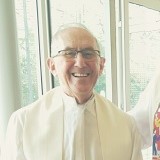
With Peter Henriks MSC
The Issoudun Pilgrimage, 2023, for Lay Staff in MSC Education Ministry.
The Issoudun Pilgrimage, 2023, for Lay Staff in MSC Education Ministry.
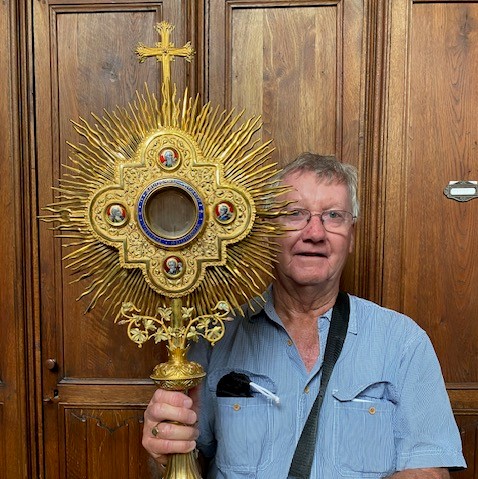
The photos show the Monstrance that was given to Jules Chevalier on the occasion of his Golden Jubilee of ordination by the meres, the Christian Mothers of Issoudun.
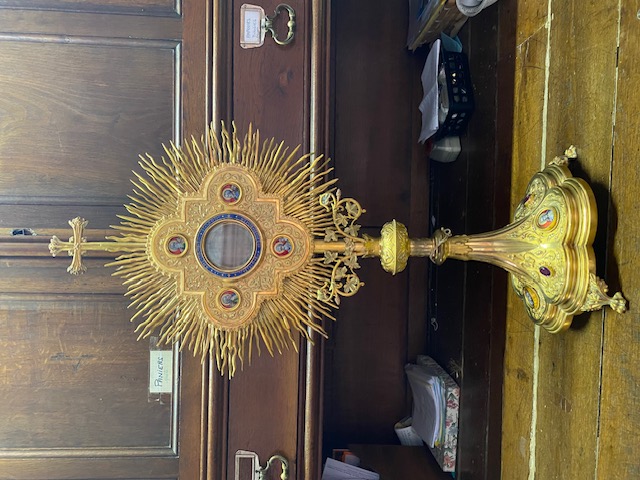
“The Pilgrimage to Issoudun for the ‘LAY STAFF IN MSC SCHOOLS IN AUSTRALIA’ is a wonderful opportunity to connect intimately with the Chevalier story and gain new understanding of the charism and spirituality. The staff approach the week as pilgrims, not as tourists.
The pilgrims take the ‘outer’ journey to Issoudun and are invited to take the ‘inner’ journey. It is a journey to a sacred space.
The person holding it is one of the parishioners at St Cyr who does tours for people. She has great knowledge of the church. We were the first people she has showed the monstrance to. (John has noted: I now have some of Jules’ DNA on my skin!)
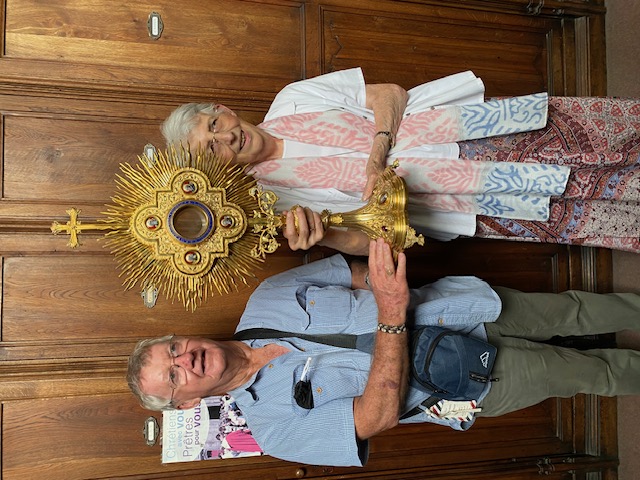
The prime reason for the lay staff to make the pilgrimage is so that they can deeply appreciate the vision and spirituality that inspires the MSC and OLSH mission in education. The deeper the appreciation the more they are able to contribute to the mission in our MSC/OLSH schools.
Anne McAtomney leads the formation team including Alison McKenzie and John Mulrooney.”
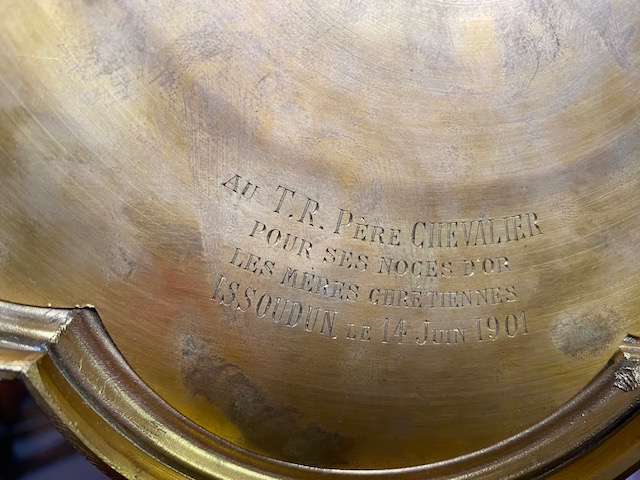
A Postscript from Yongki Wawo MSC
During this week, two MSC priests of the Australian Province (Fr John Mulrooney and Fr Kimi), three sisters from the Philippines (Sr Merle, Sr Sita, and Sr Ema) and 12 lay people who teach in MSC-owned schools in Australia made the pilgrimage to Issoudun and its surroundings. They spent more time in Issoudun in prayer and sharing, and listened to some inputs from some speakers.
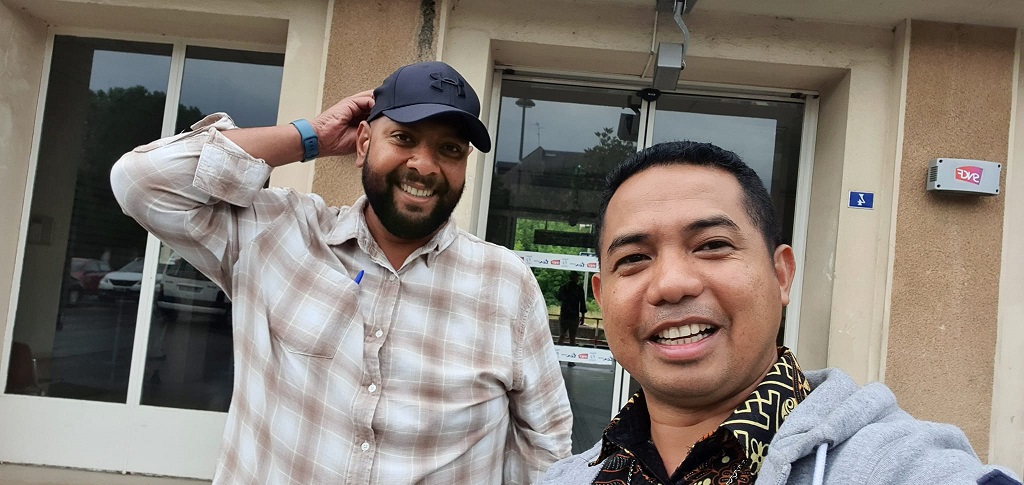
The new Province First Councillor was also at Issoudun
This morning they went to Paris. I dropped them off at Issoudun station. I was really impressed by the spirit of humility and gentleness of all of them. Alison, Anne and Fr John Mulrooney, MSC as facilitators during the activity were so excited.
There is an interesting story with Fr John. Here's the story:On a recent Friday afternoon, after a meal Fr John told me that he needed a large box to fill with the Australian group's belongings, so that next year they could still be used by other Australian groups. After lunch, P. John and I headed to a supermarket in the shopping centre in Issoudun. We arrived just as the owner of the supermarket arrived at the door of her supermarket. The lady told us "the supermarket isn't open yet, it will be at 13h40." Seeing our enthusiasm, the owner changed her mind and let us into the huge supermarket. We went straight to the box section. We decided to buy two large boxes. After that we headed towards the car park. "That mum believes that we are good people. If she suspected that we were snatchers, then she wouldn't have let us into her huge store." This is the quality of our hearts," P. John joked to me.
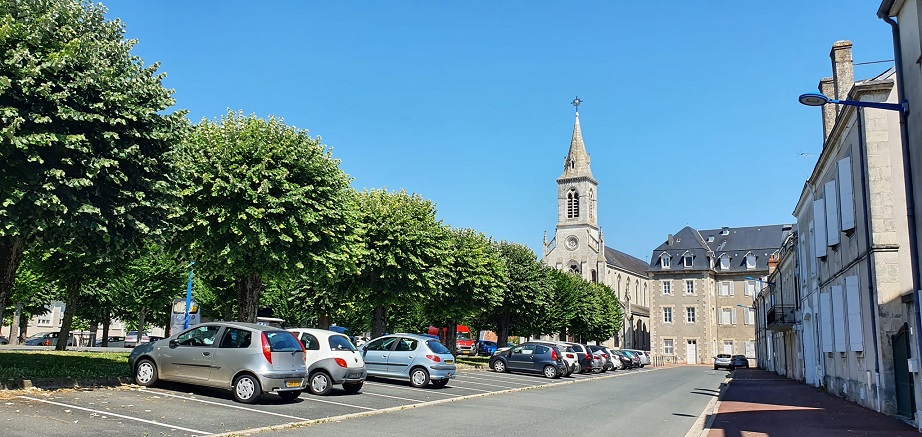
A New Norcia story, indigenous boy, traditions and Catholic Spirituality.
A New Norcia story, indigenous boy, traditions and Catholic Spirituality.
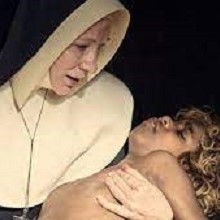
You might like to see the currently-released film, The New Boy, especially of interest to MSC and those who value Heart Spirituality. As we watch, we remember our ission activity with First Nations peoples in the Northern Territory. We might remember like tales when we think of children on Melville Island, the marriage customs on Bathurst Island, life in Central Australia.
A review highlighting themes, issues…
THE NEW BOY, 2023, 116 minutes. Cate Blanchet, Aswan Reid, Deborah Mailman, Wayne Blair, Shane Brady, Tyrique Brady. Directed by Warwick Thornton.

An intriguing film, colonial attitudes, First Nations people, religion and faith. As a realistic representation of Australian history, not so much. Writer-director, Warwick Thornton (Samson and Delilah, Sweet Country) references his own boyhood experience with the monks at Western Australia’s, New Norcia, the architecture of the convent, the agricultural background, winter, olives… As a probing of the impact of missionaries (especially Catholics and nuns), quite an allegory to be explored – the lives of the indigenous people, especially focusing on the new boy of the title (about 11 years old, never named though the orphan boys initially called him Darkie, a wonderful screen presence by Aswan Reid). No explanation of his origins except the opening where he throttles a policeman, is taken into custody, in a bag, dumped at the convent at night. There are two indigenous characters at the convent, Sister Mum, the benign cook, and George, the taciturn handyman, (played by veterans Deborah Mailman and Wayne Blair).
Ordinary audiences may be bewildered and/or put off by the focus on Jesus, prayer, piety and devotion and, above all, the large new crucifix, the excited arrival, elevated in the chapel and the nails hammered in. (The final long-held image of the film is the crucifix). But, for religious audiences, there is a fascination with how the new boy responds to the crucifix, identifying with Jesus, embracing, literally, the figure of Jesus, taking him down from the cross, tender towards him, removing the nails, the boy identifying with Jesus, even to wounded hands, becoming what we might call a Christ figure. Which highlights the challenge of the church and the Mission to the indigenous people and their embrace of Jesus in Christian practice and the meeting of Dreaming and lore and the Gospels.
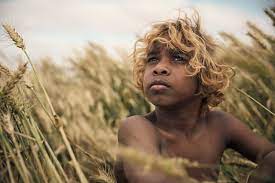
This is embodied in Sister Eileen (and a worldwide audience wanting to see a Cate Blanchett film). Promotion refers to her as a “”renegade nun”. Not really, quite misleading. She is definitely eccentric, deeply committed in her way, sometimes mentally disturbed, sometimes drinking, devoutly prayerful, the crucifix. She exercises power over the small group of under-12 orphan boys, (with a World War II setting) but combines orders and discipline with kindness. And the boys respond. As does the new boy though he is often bewildered (sleeping under the bed, mystified by spoons for porridge, not speaking except a few of his own words, but, ultimately, his word is a repeated Amen. And, mysteriously, he has the power to create fire in his hand, a kind of numinous link. There is no priest, Sister Eileen taking over from Dom Peter, interpreting rules, performing baptisms, stole and chasuble, even the new boy, cleaning and dressing up, but the loss of his power of fire. She has set up her own church but relies on her piety. Cate Blanchet as usual, a tour de force presence. So, a 21st-century perspective by a top filmmaker, provocative on colonial issues, on missionary issues, the consequences, but relying on traditions and art of Catholicism to evoke deeper social and spiritual responses.
